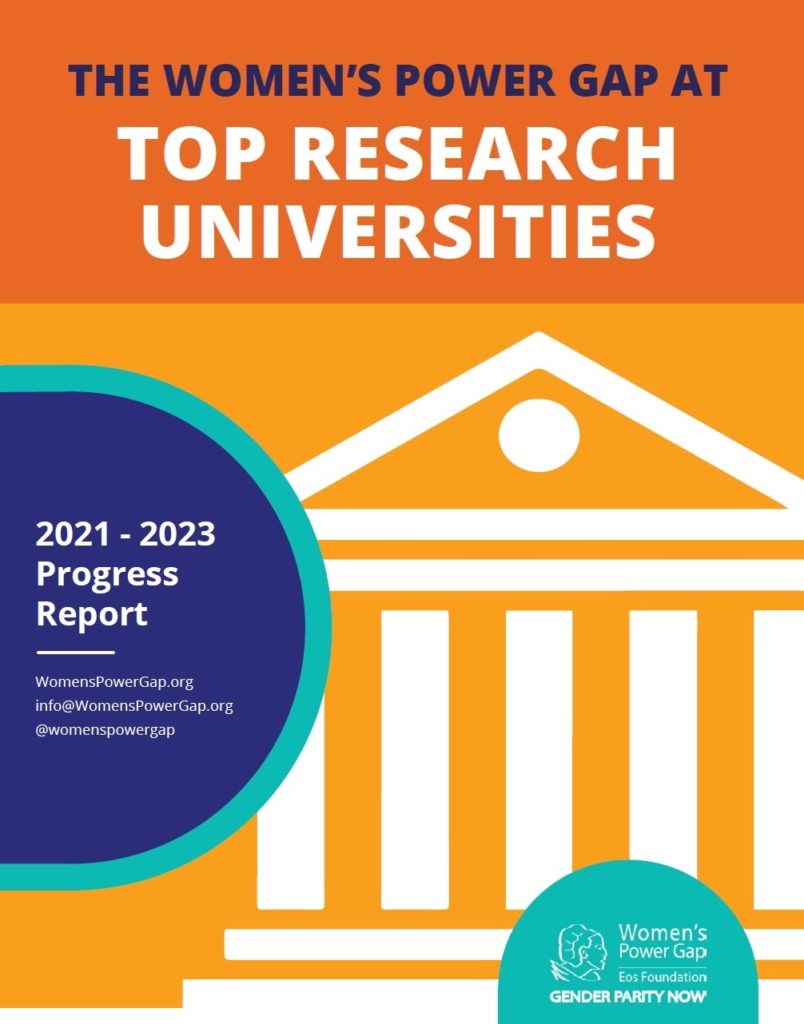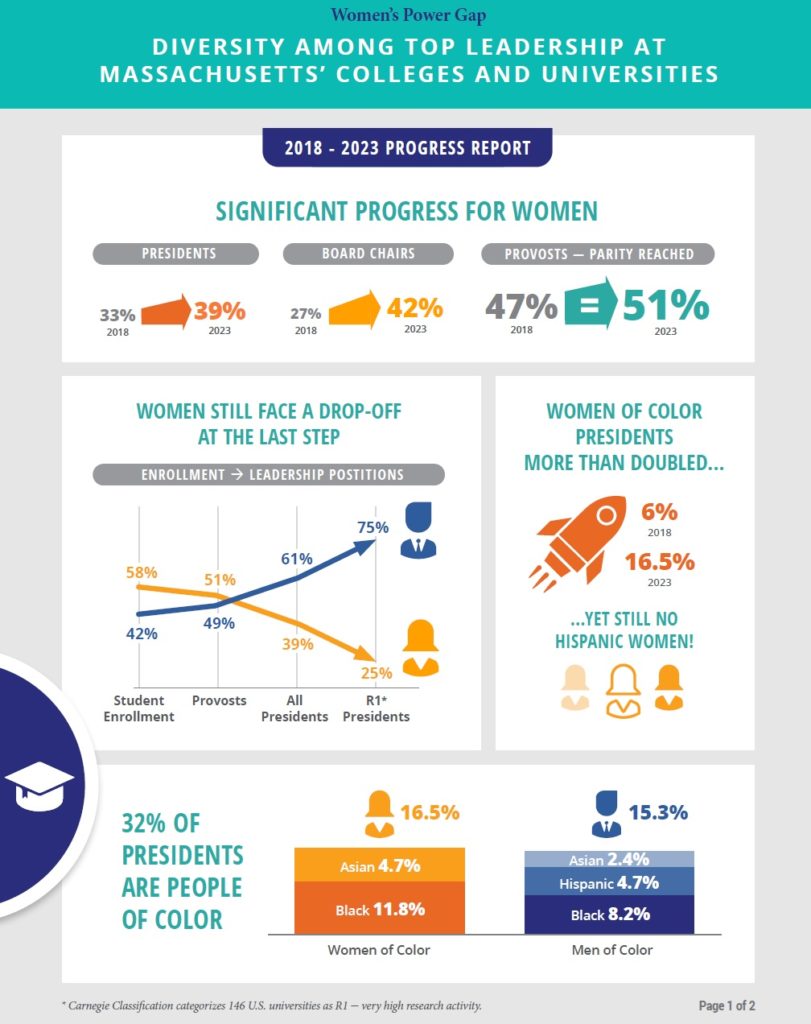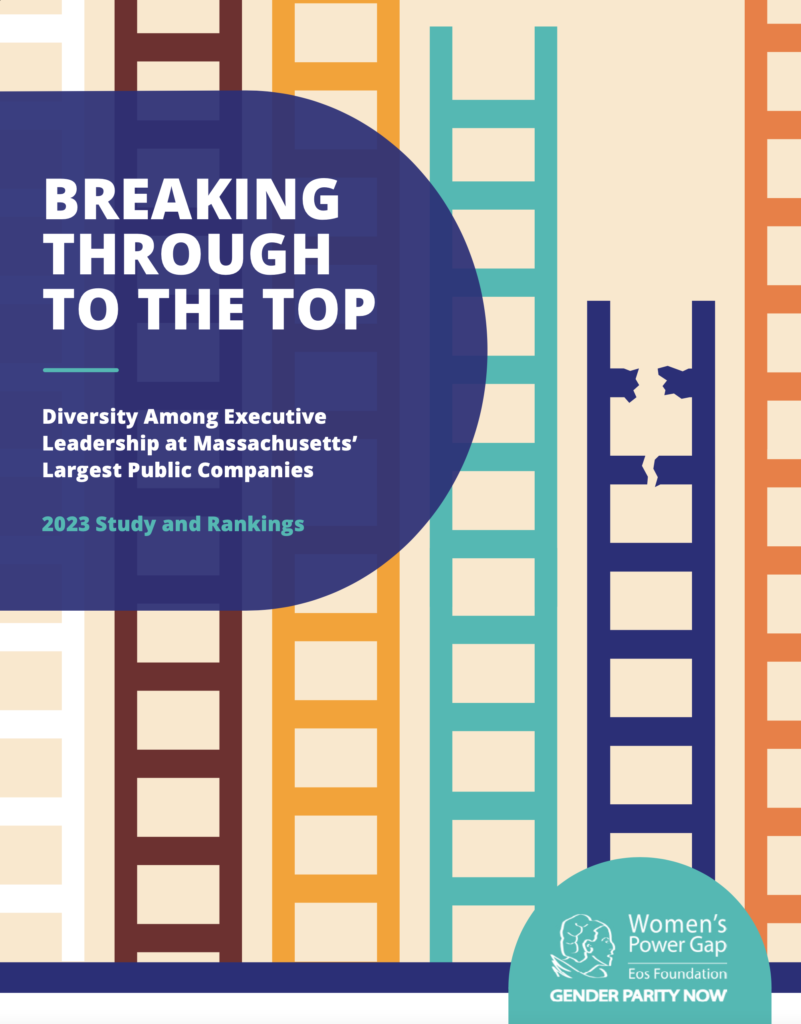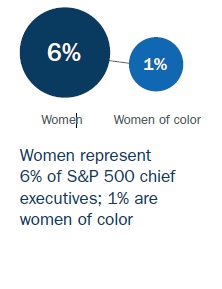
Our national progress report found that in less than two years, the number of women presidents at the nation’s top research universities rose from 22 to 30%—driven largely by the fact that fully half of all newly appointed presidents were women. In addition, women are currently at the helm of six of the eight Ivy League institutions—including a Black woman leading Harvard! Read our recommendations on how to remove barriers to women’s advancement and keep the momentum going.

Our Massachusetts progress report examined data for the state’s colleges and universities from 2018 until today and documented a significant number of women in top leadership roles: 38% of all college presidents are now women, up five percentage points in the past five years. The number of presidents who are women of color more than doubled in this time frame. Still, more work needs to be done to achieve full gender and racial parity.

Our March 2023 report on the 75 largest public companies in Massachusetts, found a modest increase in women’s representation among the most highly compensated corporate executives, from 10% in 2020 to 16% currently. But women remain notably stalled just before reaching the CEO’s office.
The Women’s Power Gap Initiative aims to dramatically increase the number of women leaders, from a diverse set of backgrounds, across prominent sectors of the economy.
The Initiative conducts research to measure the extent of the power gap and propose solutions to reach gender parity and fair representation of people of color at the top.
Each sector study is accompanied by a public dialogue and community conversation that not only highlights the issue, but also offers successful practices and policies to increase representation and inclusion.


For more than four decades, women have been earning the degrees, credentials, and experience to scale the leadership ladder. While we have experienced some progress diversifying boards of directors, women’s advancement to the top inside our major corporations and institutions has been glacial. Today, women represent only 6% of the chief executives of the S&P 500, and just 1% are women of color, according to a recent study by Catalyst. Why has progress inside our institutions been so slow? Efforts have largely focused on providing women and people of color professional development programs, mentors and sponsors, which can only take us so far. If we are to break the glass—or, as some prefer to say, the concrete—ceiling, we need to tackle institutional cultures that often undervalue less traditional leadership styles. To close the representation gap, which we at Eos Foundation call the Women’s Power Gap, efforts must focus on fixing the system, not the women. So where to begin?
Women account for 51.5% of the U.S. population, but are severely underrepresented in leadership positions. We define the Women’s Power Gap as the percentage of women in leadership subtracted from the percentage of men. The WPG is highlighted in three industries below. In 2021, these gaps are NOT acceptable. Join the effort for Gender Parity Now.
The Women’s Power Gap (WPG) Initiative was created by the Eos Foundation in 2018 to dramatically increase the number of women from diverse backgrounds among CEO and C-suite leaders nationally. We conduct and commission actionable research on prominent sectors of the economy, and measure the extent of the power and wage gaps at the company or institutional level to highlight those making fast progress, and those falling behind. Each report is accompanied by a public dialogue and community conversation highlighting the issue and offering practices and policies to increase representation and inclusion. Past reports include The Women’s Power Gap in Massachusetts Higher Education: Study and Rankings and The Women’s Power Gap in Corporate Massachusetts.
In 2021, the WPG took our work national. The Power Gap Among Top Earners at America’s Elite Universities, released in February 2021, was the first of two reports in partnership with the American Association of University Women (AAUW) examining compensation and top leadership among the country’s 130 major research universities (R1s as defined by the Carnegie Classification). A follow-up report, The Women’s Power Gap at Elite Universities: Scaling the Ivory Tower was released in January 2022.
Copyright © 2018-2022 Women’s Power Gap | Powered By: Eos Foundation | Privacy Policy